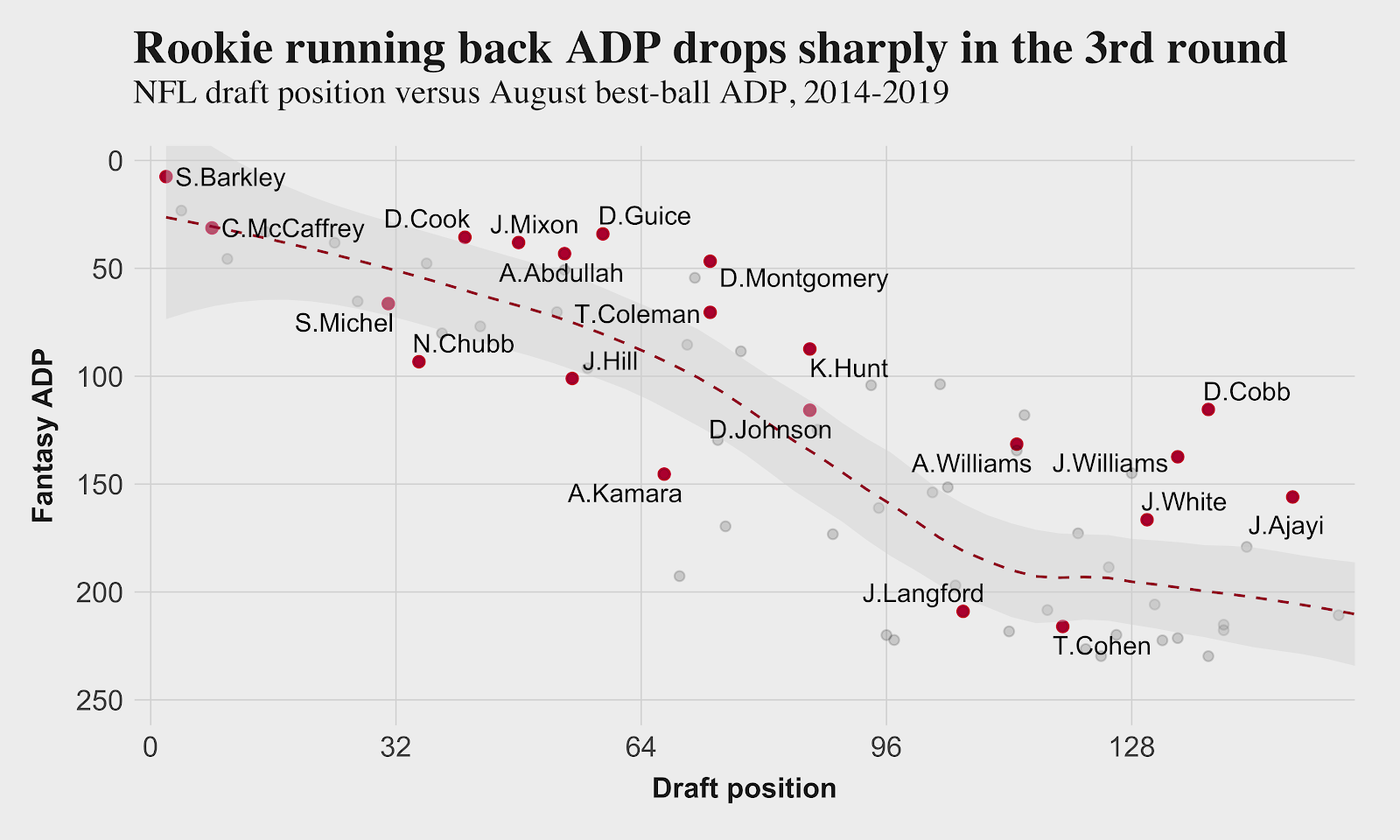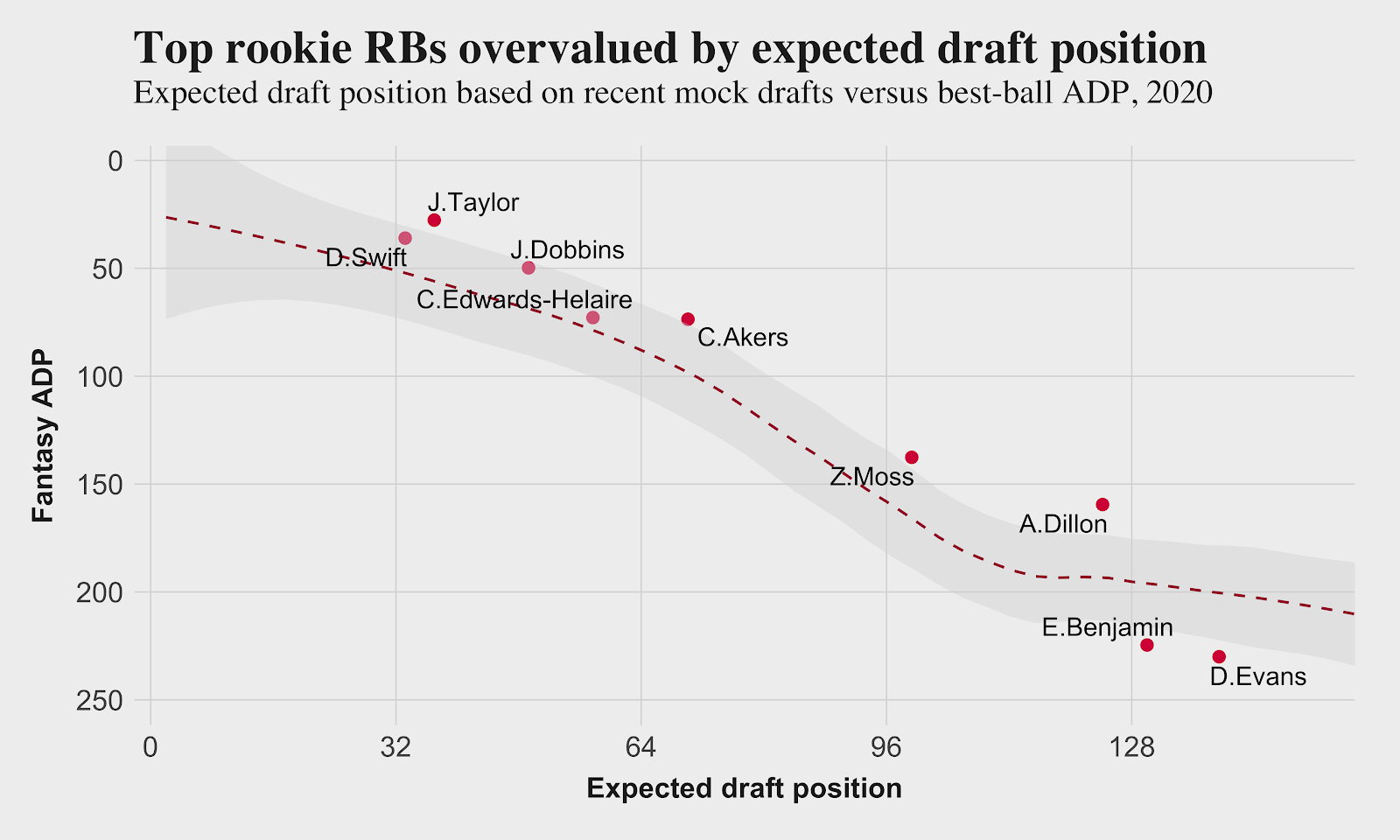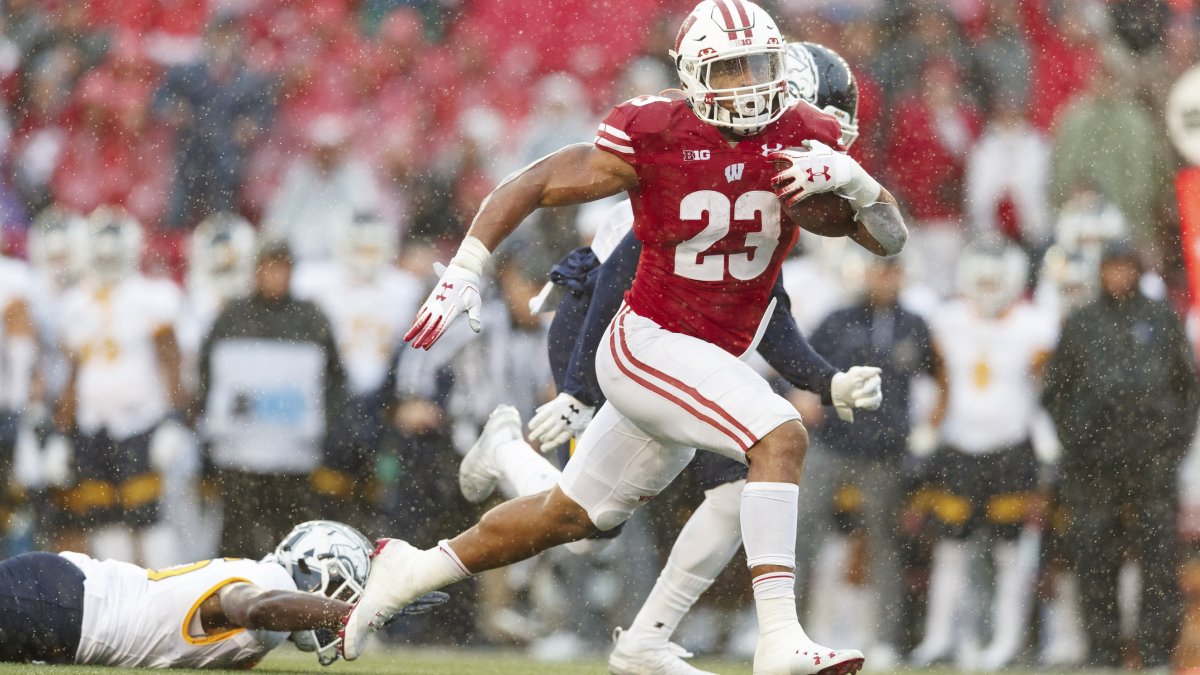Over the past few weeks, I’ve been digging through early offseason best-ball ADP data to find players whose values have shifted the most through free agency, how 2020 prospects are viewed versus past classes, the differences in positional rankings between our projections and market sentiment, and the best landing spots for rookie wide receivers and running backs. Now, I want to see what the relationship between draft position and fantasy football ADP can tell us about player value.
There will always be disconnects between the fantasy world and “real” football value, some for understandable reasons, others not. A low-volume, field-stretching receiver will have more worth on NFL draft boards than fantasy leagues whose drafters are concerned with individual stats and not affecting a defense. Even understanding those logical differences, there are often other, less easily explained disagreements in valuation between the fantasy and draft communities that can tell us where a player is over- or undervalued by either party.
The relationship between fantasy ADP and reality draft position is fairly strong and linear, and in this article, I’ll walk through seven years of fantasy football historical data and build a valuation curve between the two. We can see when in the past fantasy drafters have been too low on a player who went earlier in the NFL Draft, and vice versa. Each can probably learn from the other, with NFL teams having more data and knowledge of prospects, and fantasy football leagues providing the wisdom of crowds combining thousands of individual opinions into one valuation.
[Editor’s note: Check out PFF’s 2020 Mock Draft Hub, NFL Draft Big Board and NFL Mock Draft Simulator. PFF Elite subscribers can also download the 1,250-page 2020 NFL Draft Guide.]
HISTORICAL RUNNING BACK CURVE
In the plot below, I charted the actual NFL draft position against fantasy ADP leading into the season (August of the respective year) for each rookie taken. I highlighted the names of some productive rookies who helped win fantasy leagues for whomever drafted them and others with large deviations in value from the trend line.

Saquon Barkley was the earliest real NFL draft and fantasy draft pick, and he paid off as the RB1 in 2018 PPR leagues. That isn’t a huge shock, as Ezekiel Elliott accomplished a similar feat as the RB2 in 2016. Rookie running backs are generally much more productive earlier in their careers, so running backs who end up in favorable landing spots often are selected in the first 50 overall fantasy picks — a rarity for rookies at other positions.
Other rookie standouts, such as Alvin Kamara (RB3 as a rookie) and Kareem Hunt (RB4), were either under- or overvalued versus the historical trend line according to rookie ADPs. Others, such as Ameer Abdullah, rocketed up fantasy boards with positive offseason news, only to fall flat during the season (RB44).
THE 2020 RUNNING BACKS
For the 2020 class, I’m using expected draft positions from GrindingTheMocks, which uses publicly available mock draft data in a regression to determine when players are likely to be picked. The fantasy ADPs are taken from best-ball leagues over the last two weeks.

The fantasy community continues to block out mock drafts, and experts have indicated that D’Andre Swift will be the first running back taken while Jonathan Taylor is placed in an ADP range commonly held by early first-round picks. There’s a decent chance they end up disappointed, especially if Taylor secures only a split role and doesn’t play on third downs.
Across the board, rookie running backs are valued higher than you’d expect in fantasy leagues, including J.K. Dobbins, Cam Akers, Zack Moss and A.J. Dillion. Clyde Edwards-Helaire is the obvious early option for a huge jump in ADP if the draft gods place him in a high-powered offense with little competition.
Eno Benjamin and Darrynton Evans are undervalued versus draft position, but they have the risk of completely falling off the radar if selected in the late rounds to a full backfield. That said, they’re probably worth the risk of investment going into the draft, both with good athletic and production profiles.



 © 2025 PFF - all rights reserved.
© 2025 PFF - all rights reserved.